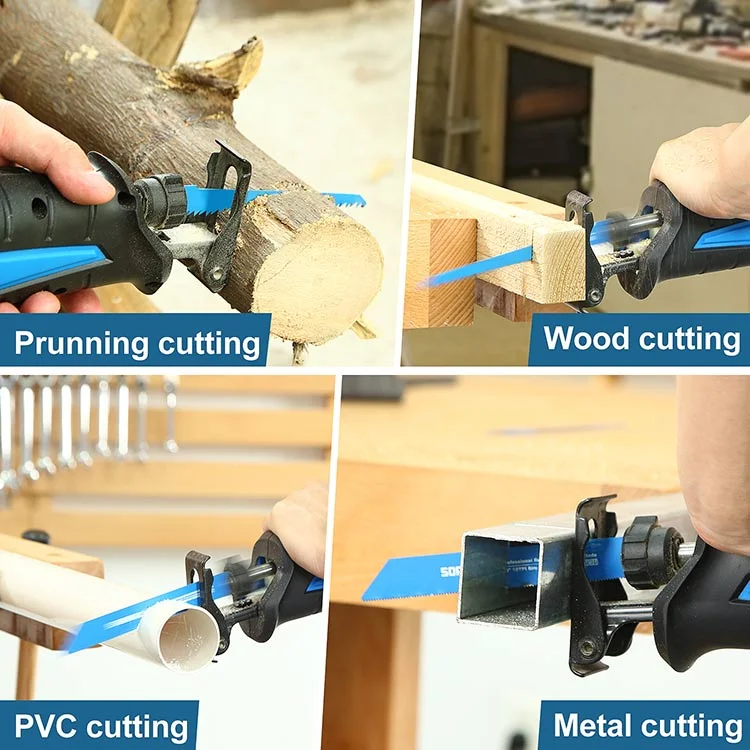
How do select the types of reciprocating saws?
While most saws are primarily used to make precise cuts, reciprocating saws are typically used to make rough cuts or to handle demolition projects. They deliver plenty of torque to the blades, quickly powering through harder materials like wood, plaster, masonry, metal, drywall, and stucco.
The popular reciprocating saw models include cordless and corded Sawzall saws, to help you work your way through the toughest tasks. Explore options from Milwaukee, DEWALT, Craftsman, Makita, Hychia, Sorako and more to get the best fit for your projects.
Two Types of Reciprocating Saws
Popular for demolition, plumbing, construction and electrical projects, these saws are perfectly suited for rough cuts or projects where accuracy isn’t the main concern. Due to their lightweight construction and easy maneuverability, reciprocating saws are an ideal choice for working in tight spaces. When choosing the best tool for your projects, there are two main types of reciprocating saws to consider.
Cordless Reciprocating Saws
If you’re looking for an option that offers maneuverability and convenience, a cordless reciprocating saw will allow you to move around from job site to job site without much restriction. Cordless Sorako saw is a popular option for battery-operated models that let you make quick cuts without the hassles of dealing with a power cord. When the battery begins to drain, simply charge it up so you can get back to work.
Corded Reciprocating Saws
If your primary goal is to maintain fast and powerful cuts, a corded option may be your best bet. Corded reciprocating saws are often more lightweight than cordless models since they don’t carry the weight of a battery. As long as you have access to an electrical outlet, a corded model will offer nearly unlimited run time.
Key Features to Look for in a Reciprocating Saw
When searching for the right reciprocating saw, consider the types of projects you might be performing. For example, a small reciprocating saw might be best suited for overhead tasks such as cutting branches or pruning trees. A larger reciprocating saw may be an ideal fit for heavy-duty projects such as cutting through pipes.
Explore all the available features when purchasing a reciprocating saw, including the following:
- Variable Speed: Designs with variable speed controls allow for greater consistency and precision. They also let users select the appropriate speed based on the type of material being cut.
- Stroke Length: Reciprocating saws feature stroke lengths ranging from ¾ to 1¼ inches. The longer the stroke length, the faster the cutting action.
- Tool-Free Blade Changes: If you work with multiple types of materials or handle many different projects on a regular basis, a saw equipped with tool-free blade change technology lets you replace blades more quickly.

